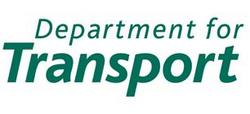
Organisation: Department for Transport
Date uploaded: 10th August 2011
Date published/launched: July 2011
This publication presents statistics on personal travel in Great Britain during 2010.

It contains the latest results and trends on how, why, when and where people travel as well as factors which affect personal travel such as car availability, driving licence holding and access to key services.
The key findings from the 2010 National Travel Survey include:
• There has been a steady falling trend in trip rates since 1995/97. Average distance travelled per person per year remained relatively stable until 2007, but has declined slightly over the last three years.
• In 2010, there was an average of 960 trips per person per year – the lowest level since the mid-1970s. There were 1,061 stages, 6,726 miles travelled, and an average trip length of 7.0 miles.
• Between 1995/97 and 2010, overall trips rates fell by 12%. Trips by private modes of transport fell by 14% while public transport modes increased by 8%. Walking trips saw the largest decrease.
• Most of the decline in overall trips rates between 1995/97 and 2010 can be accounted for by a fall in shopping and visiting friends.
• In 2010, 80% of males and 66% of females held a full car driving licence. While the proportion of males holding a licence remained fairly stable since the early 1990s, the proportion of females with a licence continued to increase.
• Trips by car (as a driver or passenger) accounted for 64% of all trips made and 78% of distance travelled in 2010.
• On average, females make more trips than males, but males travel much further each year.
• Concessionary travel pass take-up in 2010 was 78% of those eligible.
• Average annual car mileage was estimated to be 8,430 miles in 2010.
For more information contact:
Lyndsey Avery
